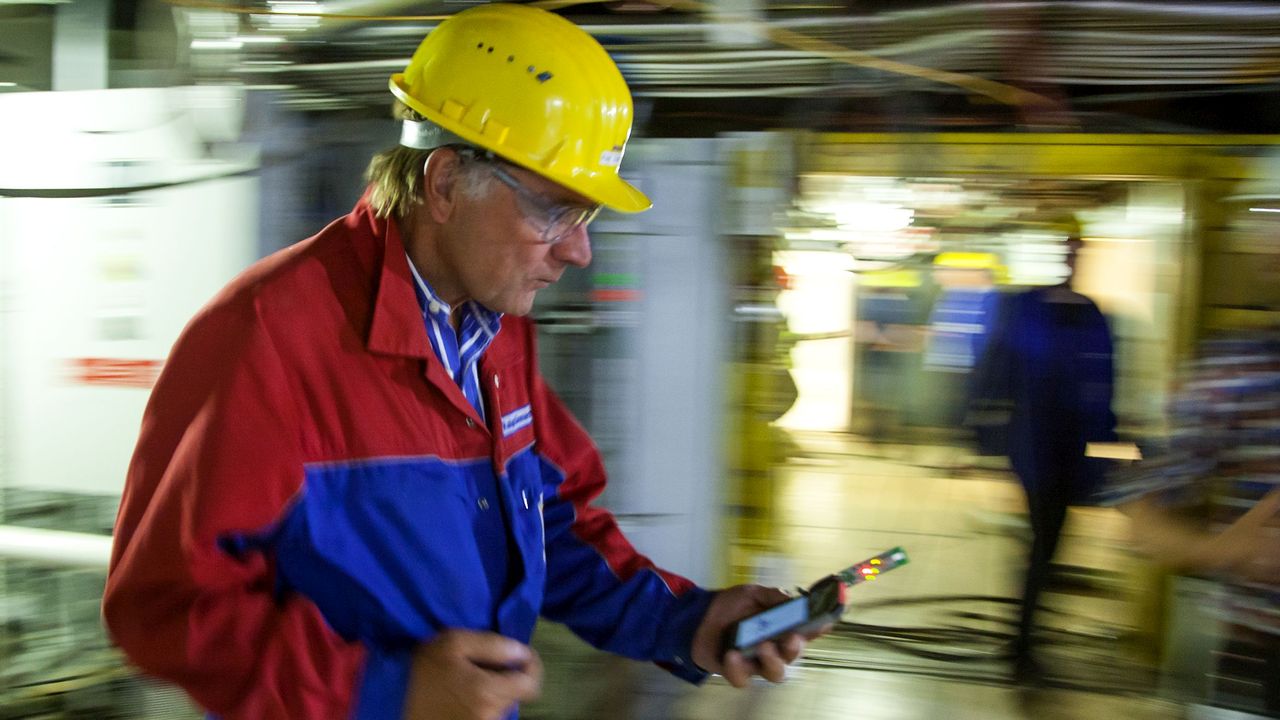There is no positioning technology, such as GPS, for the indoor area. This makes location at shipyards, for instance, very difficult. In ship building, the environment changes constantly as a result of the construction process. Moreover, the metallic environment inhibits wireless communication that is required for location. Now, Karlsruhe Institute of Technology (KIT), in cooperation with Meyer Werft and VOMATEC Innovations, has developed a new system to locate persons in a dynamic environment inside a hall under the SchiV 3.0 project.
Contrary to automotive industry with its fixed production lines, ships are built by block building construction. Small parts are assembled to bigger units. These units are walkable, equipped with cables and pipes, and finally assembled to sections. Ten sections form a block that is further equipped and finally transported to the shipyard. A cruise ship, for instance, consists of 90 of such blocks.
“Location of persons and immediate transmission of safety-relevant information are extremely difficult in such a situation,” says Wilhelm Stork, Head of the Institute for Information Processing Technology of KIT. So far, safety deficiencies and risks, such as lacking handrails, exposed cables, or easily inflammable construction wastes, such as dyes and preservatives, have been detected and reported manually. Inspectors walk around the ship and list on paper forms critical conditions, such as burnable materials near places of hot work. At the end of their inspection round, they submit these reports to their superior, who initiates the necessary measures.
“The innovation potential will be enormous when digital technologies are used to control these procedures,” Frank Hartmann of the same institute says. Within the framework of his doctoral project, Hartmann developed a location system, by means of which safety risks are eliminated more rapidly and work safety is enhanced. In addition, it helps optimize logistics, i.e. anticipatory transport of construction material to the place of installation inside the ship under construction. Moreover, construction progress, i.e. acceptance of the tasks, can be documented promptly. His system is based on a hybrid approach: Together with the necessary infrastructure of the construction site, such as power supply, antennas are installed for near-field radio communication. From the distance measured to several antennas, the position can be determined by trilateration. If radio contact to the antennas in the crooked steel belly of the ship is too weak, the position is estimated with the help of movement and acceleration sensors of a mobile end device and dead reckoning. “This results in a sufficient positioning accuracy, while installation expenditure remains acceptable,” Hartmann explains.
The system successfully tested at Meyer Werft in Papenburg is completely digital. Safety inspectors photograph deficiencies, risks, or construction progress in the ship sections and store them as a work process, e.g. “remove waste,” on a smartphone using a mobile app developed by the cooperation partner VOMATEC. At the same time, the system collects the position data and couples them with the work process required. Both information packages are transmitted in real time by mobile radio or WLAN, uploaded on a server as “incident,” and can be handled immediately.
In a clearly defined area of about 1200 m² of a cruise ship under construction at Meyer Werft, Hartmann has already simulated various application scenarios with this prototype. Apart from ship construction, the instrument may also be used in civil engineering or aircraft construction.
The ShiV 3.0 project was funded by the Federal Ministry for Economic Affairs and Energy via the Jülich Project Management Agency. KIT’s consortium partners were Meyer Werft GmbH und Co. KG and VOMATEC Innovations GmbH. The project was started in 2013 and completed in 2016.
More about the KIT Information · Systems · Technologies
In close partnership with society, KIT develops solutions for urgent challenges – from climate change, energy transition and sustainable use of natural resources to artificial intelligence, sovereignty and an aging population. As The University in the Helmholtz Association, KIT unites scientific excellence from insight to application-driven research under one roof – and is thus in a unique position to drive this transformation. As a University of Excellence, KIT offers its more than 10,000 employees and 22,800 students outstanding opportunities to shape a sustainable and resilient future. KIT – Science for Impact.

